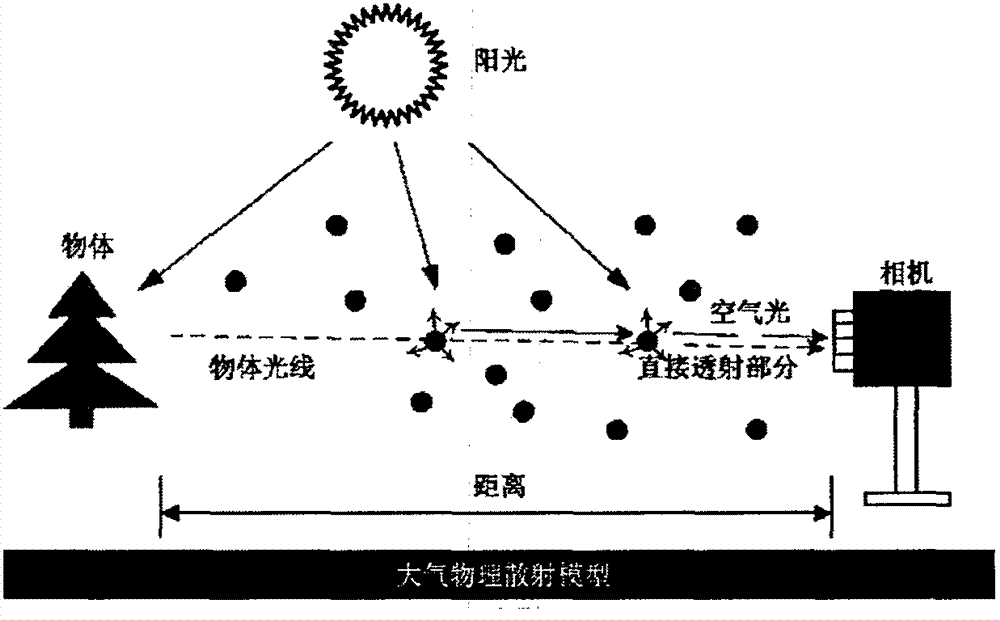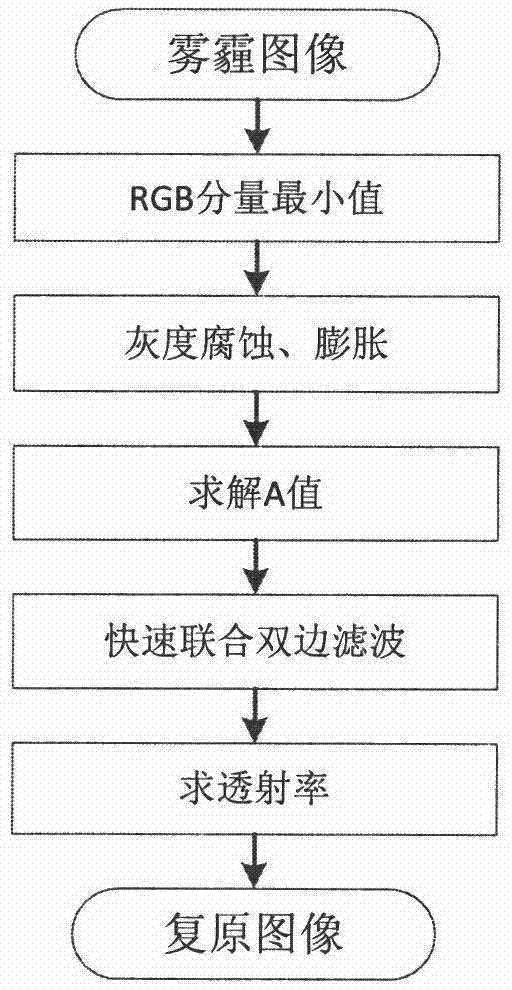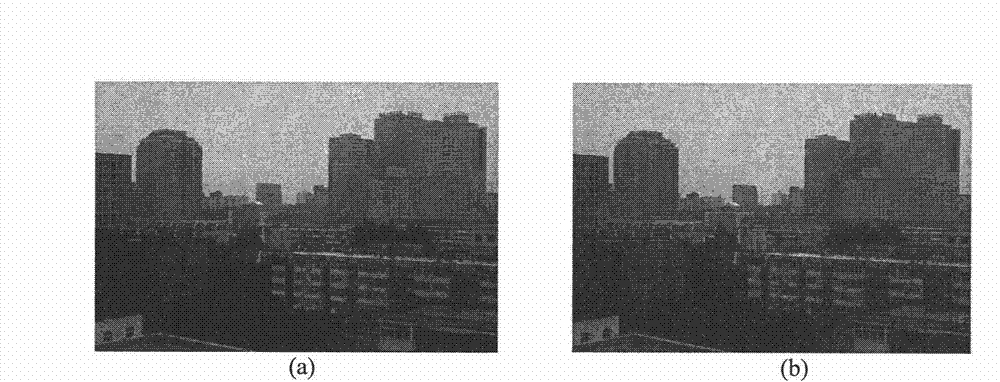Rapid image defogging method based on atmospheric physical scattering model
A scattering model and atmospheric technology, applied in the field of image processing, can solve problems such as long operation time and unsatisfactory recovery effect, and achieve the effect of avoiding halo artifacts and accurate estimation.
- Summary
- Abstract
- Description
- Claims
- Application Information
AI Technical Summary
Problems solved by technology
Method used
Image
Examples
Embodiment approach
[0060] The present invention proposes a method for estimating ambient light A based on grayscale morphology, and the implementation method is as follows:
[0061] (1) The basic principle of the imaging model
[0062] Order L 0 (x, y)=ρ(x, y)×A, ρ(x, y) is the reflectivity of the target, for the low reflectivity target in the image, when ρ(x, y)→0,
[0063] L 0 (x, y) → 0 (4)
[0064] Substituting formula (4) into formula (1), we can get,
[0065] L(x,y)=A(1-e -kd(x,y) ) (5)
[0066] It can be seen from formula (5) that for low-reflectivity targets, the greater the target depth of field, the more atmospheric particles in the optical path, so that the scattering effect of atmospheric particles on ambient light is stronger, and the image brightness is greater. When d(x, y)→∞, from formula (5) we can get
[0067] L(x,y)→A (6)
[0068] From equations (4), (5) and (6), we can see that ρ(x, y)→0 and d(x, y)→∞ are the solutions to L 0 Constraints on (x, y).
[0069] Based on...
PUM
 Login to View More
Login to View More Abstract
Description
Claims
Application Information
 Login to View More
Login to View More - R&D
- Intellectual Property
- Life Sciences
- Materials
- Tech Scout
- Unparalleled Data Quality
- Higher Quality Content
- 60% Fewer Hallucinations
Browse by: Latest US Patents, China's latest patents, Technical Efficacy Thesaurus, Application Domain, Technology Topic, Popular Technical Reports.
© 2025 PatSnap. All rights reserved.Legal|Privacy policy|Modern Slavery Act Transparency Statement|Sitemap|About US| Contact US: help@patsnap.com



